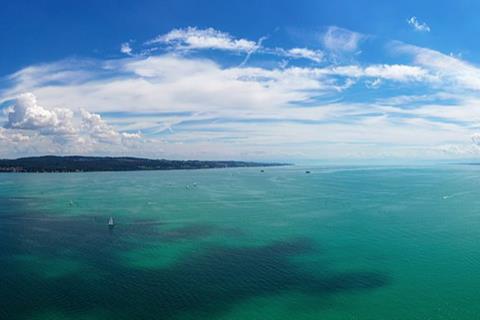How is the biodiversity of aquatic communities changing? What factors are involved in this this process? And what changes can be made to prevent further biodiversity loss?

The research project Aquatic Biodiversity Exploratories (ABOVE) at the University of Konstanz’s Limnological Institute aims to answer these questions. Recently installed infrastructure allows scientists to observe biodiversity under different conditions and in long-term experiments.
Since the 1970s, the average abundance of freshwater species in rivers and lakes has declined by 83%. “Unfortunately, we know very little about the processes driving this concerning decline in biodiversity, and practically nothing about the biodiversity within species, which plays a key role in how ecosystems respond to disturbances,” says Lutz Becks, a professor of aquatic ecology and evolution at the University of Konstanz.
“Biodiversity research is therefore important and urgent, not only for understanding how these changes occur or have occurred, but also to predict what needs to be done differently in the future.” Ultimately, the goal is to enable biodiversity to rebound and to use the research findings to take appropriate measures to promote greater biodiversity.
Ideal conditions
The new 600-litre tanks, known as mesocosms, are large enough to contain diversity in all its complexity. The tanks are filled with plankton-rich water from Lake Constance. Using actual lake water, but putting it in separate containers, is like creating miniature biotopes.
In this controlled environment, researchers can simulate different environmental influences and study very specific aspects of biodiversity changes. Mesocosms thus provide a key link between laboratory and field research.
“The great thing about this system is that we can not only track individual species but also the diversity within the species and their interactions with each other,” Becks explains. “And we can change, that is manipulate, the environmental conditions. For example, we can alter stress factors such as temperature and measure their impact on the plankton communities and biodiversity changes.”
Ecology and AI
A key feature of the system is an automated image acquisition that will be used to identify the biotic communities. “We are very pleased to support this promising research project, which combines ecological research with modern AI technology,” says Stefan Hofmann from the board of the Gips-Schüle Foundation.
A pilot phase, which will run until autumn of 2024, will intensively test the system before additional tanks are installed. The facility will have a total of 34 tanks, and it will open up new opportunities for students.
“Among other things, we plan to use the system for laboratory courses in bachelor’s and master’s programmes. This will allow us to expose the next generation of researchers to the most state-of-the-art methods and fundamental questions in this research area. At the same time, the students can help us generate and process the large amount of data that will be collected,” Becks adds.
At a glance
The research project Aquatic Biodiversity Exploratories (ABOVE) studies the conditions that cause changes in biodiversity. Using automated microscopes and machine learning, researchers will identify, observe and analyze the development of different plankton communities under various simulated environmental influences.
The pilot phase with four tanks began in April 2024 at the University of Konstanz’s Limnological Institute.
The project has been funded by the Gips-Schüle Foundation since 2023. Funding amounting to 230,000 euros will be provided in 2024.







No comments yet